Cool Temptation: Can Cats Eat Ice Cream Safely? The Vet-Backed Truth
- 21 Apr 2025 11:45
The image is common: a person enjoying a bowl of ice cream, and their feline friend looking on with curious eyes, perhaps even trying to sneak a lick. It’s tempting to share this sweet, cold treat, especially on a warm day. This leads many cat owners to ask the seemingly simple question: can cats eat ice cream? While a tiny lick might seem harmless, the reality, according to veterinary experts, is that ice cream is not a suitable or safe food for cats. Indulging your cat's apparent interest in this human dessert can lead to various health issues, ranging from mild digestive upset to more severe complications. This article provides an in-depth look at why ice cream is bad for cats, explores the specific risks involved, discusses potential ingredient toxicity, and offers safer alternatives for treating your beloved pet.
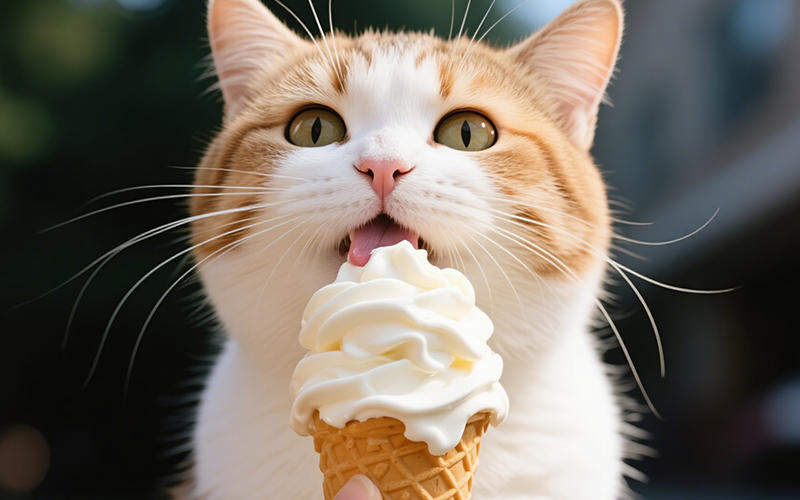
The Main Culprit: Lactose Intolerance in Cats
The primary reason why ice cream is unsuitable for most cats lies in a fundamental biological difference: the majority of adult cats are lactose intolerant.
What is Lactose Intolerance?
Lactose is a sugar found naturally in milk and dairy products. To digest lactose properly, the body needs an enzyme called lactase. Kittens, while nursing, produce sufficient lactase to break down their mother's milk. However, as kittens wean and mature into adult cats, their bodies naturally decrease lactase production significantly.
Why Adult Cats Can't Handle Dairy
Without enough lactase, an adult cat cannot effectively break down the lactose in dairy products like milk, cheese, and, importantly, ice cream (which typically has a milk or cream base). When undigested lactose travels through the gastrointestinal tract, it draws water into the intestines and gets fermented by gut bacteria. This process commonly leads to uncomfortable and unpleasant symptoms, usually appearing within 8 to 12 hours:
Diarrhea
Vomiting
Gas and Bloating
Abdominal pain and cramping
Increased flatulence
So, while your cat might *seem* interested in ice cream (often attracted by the fat content or novelty), their digestive system is generally ill-equipped to handle the dairy component. This fundamental intolerance is the first major red flag when considering the question, can cats eat ice cream?
Beyond Lactose: Other Reasons Ice Cream is Unhealthy for Cats
Even if a cat could tolerate lactose (which is rare), ice cream presents several other health concerns due to its typical ingredients:
1. High Sugar Content
Ice cream is loaded with sugar. Cats are obligate carnivores, meaning their bodies are designed to thrive on meat-based proteins and fats, not carbohydrates or sugars. They don't even possess the taste receptors to detect sweetness! Consuming sugary foods offers no nutritional benefit to cats and can contribute to serious long-term health problems:
**Obesity:** Excess sugar provides empty calories, leading to weight gain. Obesity in cats significantly increases the risk of other diseases.
**Diabetes Mellitus:** A high-sugar diet can contribute to insulin resistance and diabetes, a serious metabolic disorder requiring lifelong management.
**Dental Problems:** Sugar promotes bacterial growth in the mouth, leading to plaque, tartar buildup, gingivitis, and tooth decay.
2. High Fat Content
Ice cream, especially premium varieties, is rich in fat. While cats need fat in their diet, the high concentration and type of fat in ice cream can overwhelm their system. Excessive fat intake can cause:
**Gastrointestinal Upset:** Similar to lactose intolerance, high fat can trigger vomiting and diarrhea.
**Pancreatitis:** A sudden high-fat meal can potentially trigger pancreatitis, a painful and dangerous inflammation of the pancreas. This condition often requires veterinary hospitalization.
**Obesity:** Fat is calorie-dense, further contributing to weight gain and associated health risks like arthritis and heart disease.
3. Potential for Toxic Ingredients
This is a critical concern. Many popular ice cream flavors contain ingredients that are highly toxic to cats:
**Chocolate:** Contains theobromine and caffeine, both of which are toxic stimulants to cats. Darker chocolate is more dangerous. Symptoms range from vomiting and diarrhea to hyperactivity, tremors, seizures, heart arrhythmias, and even death.
**Coffee/Tea Flavors:** Caffeine is extremely dangerous for cats, affecting the central nervous system and heart.
**Xylitol:** This artificial sweetener is EXTREMELY toxic to cats (and dogs). Even tiny amounts can cause a rapid, life-threatening drop in blood sugar (hypoglycemia) and potential liver failure. Xylitol is increasingly found in sugar-free or low-calorie ice creams and other products. ALWAYS check labels.
**Grapes and Raisins:** Often found in flavors like rum raisin, these fruits can cause acute kidney failure in cats.
**Macadamia Nuts:** Toxic to pets, causing neurological symptoms like weakness, tremors, and hyperthermia.
**Alcohol:** Some gourmet ice creams contain alcohol (e.g., rum raisin, liqueur flavors). Alcohol is highly toxic to cats, affecting their nervous system and organs.
**Onion/Garlic Powder:** While less common in ice cream, some savory novelty flavors might contain these, which damage red blood cells.
The risk of accidental poisoning from these ingredients makes sharing ice cream incredibly hazardous. The question "can cats eat ice cream?" becomes a resounding "NO" when toxic ingredients are involved.
4. Artificial Additives and Fillers
Many commercial ice creams contain artificial colors, flavors, preservatives, and stabilizers. While not always acutely toxic, these chemicals can sometimes trigger allergic reactions or digestive sensitivities in susceptible cats.
5. The Temperature: "Brain Freeze"?
While the concept of "brain freeze" (sphenopalatine ganglioneuralgia) is well-known in humans, it's less understood in cats. Rapidly consuming very cold substances can cause discomfort, but it's the least significant risk compared to lactose intolerance, sugar/fat content, and potential toxins.
What About Specific Ice Cream Flavors?
Let's briefly analyze common flavors: * **Vanilla:** Plain vanilla ice cream *might* seem safer, but it still contains high levels of lactose, sugar, and fat. Crucially, check the ingredients list carefully for xylitol, especially in sugar-free versions. A minuscule lick of plain vanilla *without* xylitol might not cause immediate disaster for every cat, but it's still unhealthy and sets a bad precedent. * **Chocolate:** Absolutely not. Toxic due to theobromine and caffeine. Never allow cats near chocolate ice cream. * **Strawberry/Fruit Flavors:** While some fruits (like strawberries and blueberries) are safe for cats in tiny amounts, fruit-flavored ice cream is packed with sugar and dairy. Also, beware of toxic fruits like grapes/raisins or artificial flavorings. * **Coffee/Mocha:** Toxic due to caffeine. Avoid completely. * **Nut Flavors:** Besides the high fat, some nuts (like macadamia) are toxic. Others can be allergens or choking hazards. Best avoided. * **"Sugar-Free" Options:** Extremely dangerous if they contain xylitol. Always assume risk unless the ingredient list is meticulously checked and confirmed xylitol-free. Other artificial sweeteners can also cause digestive upset.
What Should I Do If My Cat Accidentally Ate Ice Cream?
Accidents happen. If your cat managed a few licks or more: 1. **Identify the Ice Cream:** Determine the flavor and, if possible, check the ingredients list immediately. Pay close attention to potential toxins like chocolate, xylitol, caffeine, raisins, macadamia nuts, or alcohol. 2. **Estimate the Amount:** How much did they consume? A tiny lick is less concerning than several mouthfuls. 3. **Remove Access:** Secure the ice cream away from your cat. 4. **Do NOT Induce Vomiting:** This should only be done under veterinary guidance. 5. **Monitor Closely:** Watch for symptoms of lactose intolerance (diarrhea, vomiting, gas) over the next 12-24 hours. More importantly, watch for signs of toxicity if dangerous ingredients were involved: * *Chocolate/Caffeine:* Restlessness, hyperactivity, rapid breathing, muscle tremors, seizures, vomiting. * *Xylitol:* Vomiting, weakness, lethargy, incoordination, collapse, seizures (signs can appear within 30 minutes). **THIS IS AN EMERGENCY.** * *Raisins/Grapes:* Vomiting, lethargy, decreased appetite, abdominal pain (signs of kidney failure may take 24-72 hours). * *Alcohol:* Drooling, vomiting, weakness, incoordination, decreased respiratory rate, collapse. 6. **Contact Your Veterinarian or Emergency Pet Clinic:** This is the most crucial step, especially if you know or suspect toxic ingredients were consumed, or if your cat ate more than a tiny amount. Call immediately, explain the situation (flavor, ingredients if known, amount consumed, time elapsed, cat's weight/breed), and follow their professional advice. Prompt action is vital in cases of poisoning.
Ice Cream Components & Cat Safety Summary
This table highlights the risks associated with common ice cream components for cats:
| Component | Risk Level for Cats | Primary Concerns |
| Lactose (from Milk/Cream) | High Risk / Unsafe | Most adult cats are lactose intolerant; causes digestive upset (diarrhea, vomiting, gas). |
| Sugar | High Risk / Unhealthy | Contributes to obesity, diabetes, dental problems; no nutritional value for cats. |
| Fat | High Risk / Unhealthy | Can trigger pancreatitis, G.I. upset; contributes to obesity. |
| Chocolate | Extremely Toxic / Unsafe | Theobromine/caffeine toxicity; can cause neurological and cardiac problems, potentially fatal. |
| Xylitol | Extremely Toxic / Unsafe | Causes severe hypoglycemia (low blood sugar) and liver failure, potentially fatal even in small amounts. |
| Caffeine (Coffee, Tea) | Highly Toxic / Unsafe | Causes neurological and cardiac stimulation, restlessness, tremors, seizures. |
| Grapes/Raisins | Highly Toxic / Unsafe | Can cause acute kidney failure. |
| Overall Recommendation for Cats and Ice Cream | Avoid Completely | Multiple significant health risks (lactose intolerance, sugar, fat, potential toxins) make it unsafe. |
Need Quick Pet Health Guidance? Try PettureX
Navigating pet health questions, like whether a food is safe or what to do after accidental ingestion, can be stressful. Having a reliable resource at your fingertips is invaluable. Consider the **PettureX** app, a smart assistant for modern pet parents. If you find yourself wondering about specific foods or notice concerning symptoms, PettureX offers features like:
Image Recognition for Pet Health Analysis: Upload photos of symptoms (e.g., vomit, skin issues) for preliminary AI insights. *Remember, this doesn't replace a vet diagnosis.*
24/7 AI Veterinary Consultation: Ask questions like "My cat licked chocolate ice cream, what are the signs of toxicity?" or "Are there safe cold treats for cats?" Get immediate, AI-powered general advice and guidance on when symptoms warrant an urgent vet visit.
Animal Species Identification: Identify other animals easily.
PettureX can help you quickly assess situations and make informed decisions about your pet's care, acting as a helpful first point of contact before consulting your veterinarian.
Safer Treat Alternatives for Your Cat
Instead of sharing potentially harmful ice cream, offer your cat treats that are safe and healthy: * **Commercial Cat Treats:** Choose high-quality, low-calorie treats specifically formulated for cats. Dental treats can also be beneficial. * **Plain Cooked Meat:** Small pieces of unseasoned, cooked chicken, turkey, or fish (bones removed) are excellent protein-rich treats. * **Catnip:** Many cats enjoy dried catnip or catnip-filled toys. * **Specific Cat-Safe "Ice Cream":** Some pet brands offer specially formulated frozen treats for cats, typically made from lactose-free bases or savory broths. Always check the ingredients. * **DIY Frozen Treats:** Freeze low-sodium chicken or beef broth (ensure no onion or garlic) in an ice cube tray for a simple cold treat. Freeze small amounts of plain, unsweetened, lactose-free yogurt (if your cat tolerates it well in tiny amounts). * **Small Amounts of Safe Fruits/Veggies:** Tiny pieces of cantaloupe, blueberries, strawberries, or cooked plain pumpkin can be offered occasionally, but aren't dietary necessities.
Conclusion: Keep Ice Cream Away From Your Feline Friend
To definitively answer the question "can cats eat ice cream?": No, they should not. While a single, accidental tiny lick of plain vanilla ice cream might not cause immediate harm to every cat, the potential risks associated with lactose intolerance, high sugar and fat content, and especially the danger of toxic ingredients like chocolate and xylitol, make it an unsafe and unhealthy choice. Prioritize your cat's health and well-being by reserving ice cream for human enjoyment only. Offer species-appropriate, safe treats instead. If accidental ingestion occurs, particularly involving potentially toxic flavors, contact your veterinarian immediately. By understanding the risks and making informed choices, you can ensure your feline companion enjoys a long, healthy, and happy life, free from the dangers lurking in your dessert bowl.
Related
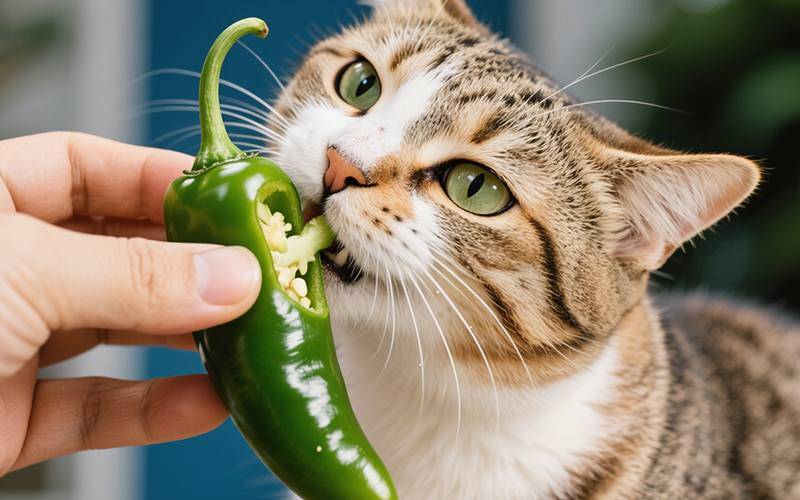
The Burning Question: Can Cats Eat Jalapenos? A Comprehensive Safety Guide
- 21 Apr 2025
Frankly Dangerous: Can Cats Eat Hot Dogs? Vet Explains the Serious Risks
- 16 Apr 2025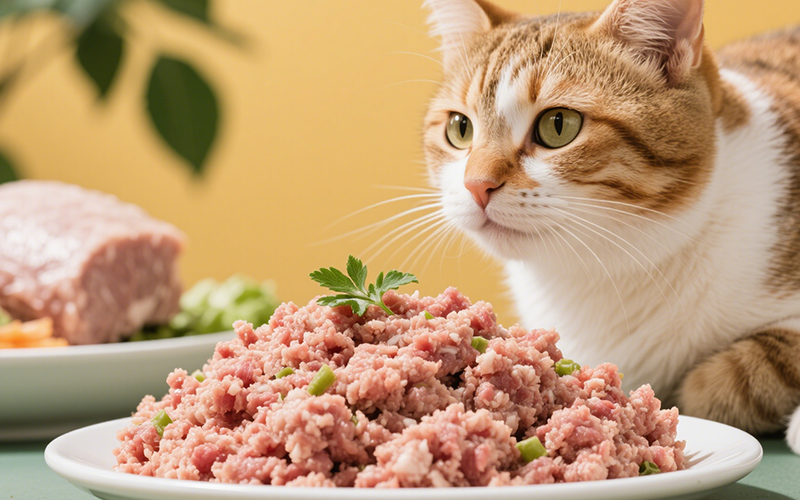
A Purrfect Protein? Can Cats Eat Ground Turkey Safely? (Vet-Reviewed Guide)
- 16 Apr 2025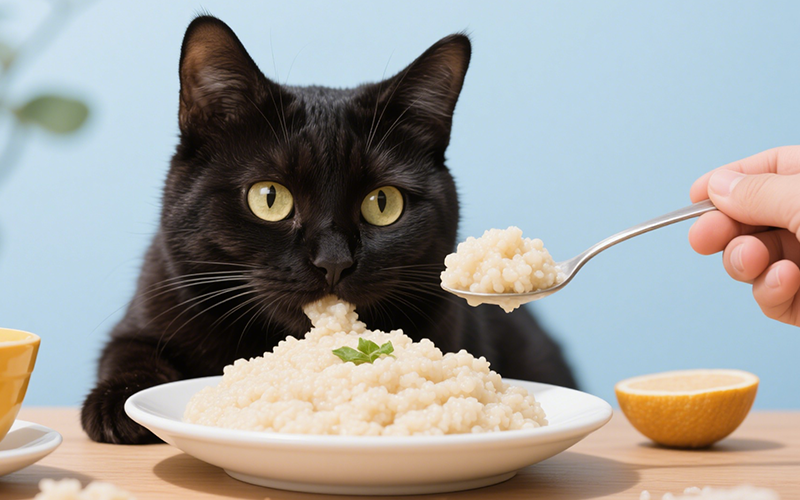
Gritty Situation: Can Cats Eat Grits Safely? Vet Explains the Risks
- 16 Apr 2025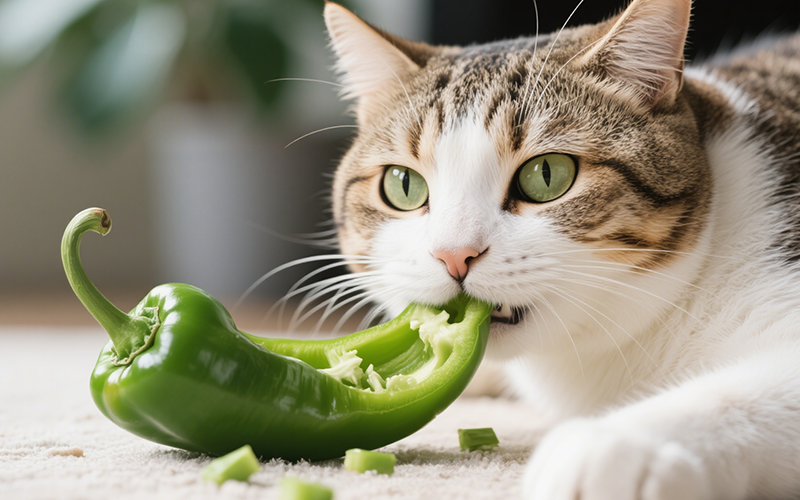
Crunchy Query: Can Cats Eat Green Peppers? A Vet-Reviewed Safety Analysis
- 16 Apr 2025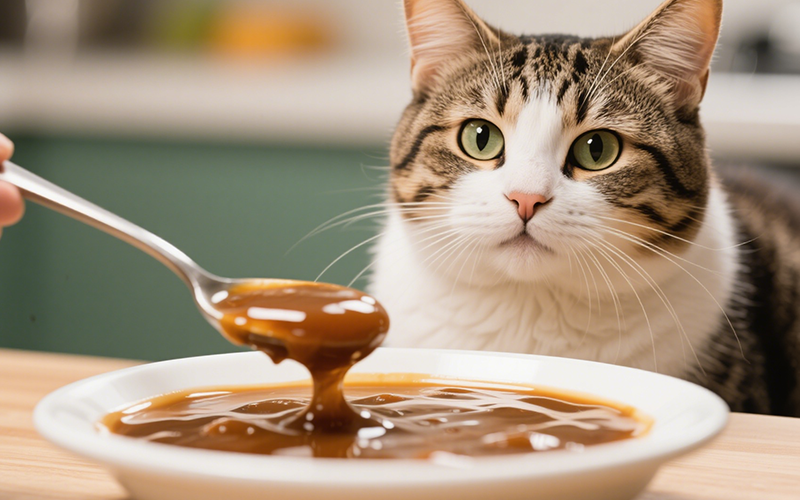
Gravy Danger Zone: Can Cats Eat Gravy Safely? (Vet-Reviewed Warning)
- 16 Apr 2025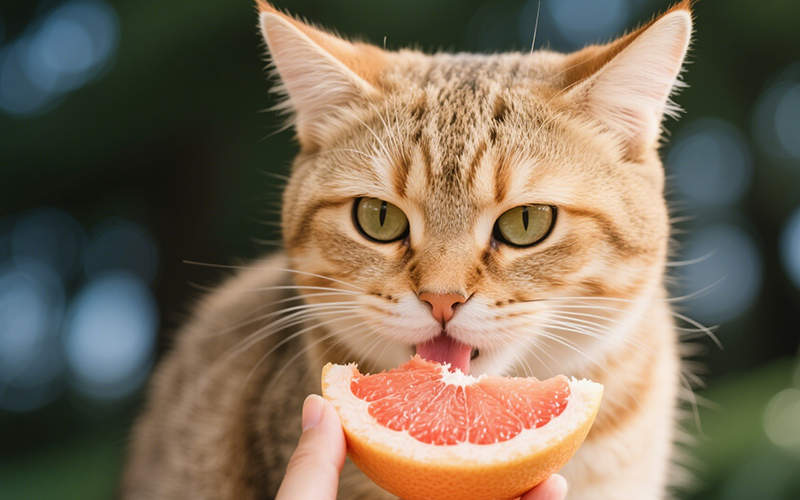
Toxic Temptation: Can Cats Eat Grapefruit? Vet Explains the Dangers
- 16 Apr 2025
Emergency Meal or Major Mistake? Can Cats Eat Dog Food For A Couple Days? (Vet Guide)
- 16 Apr 2025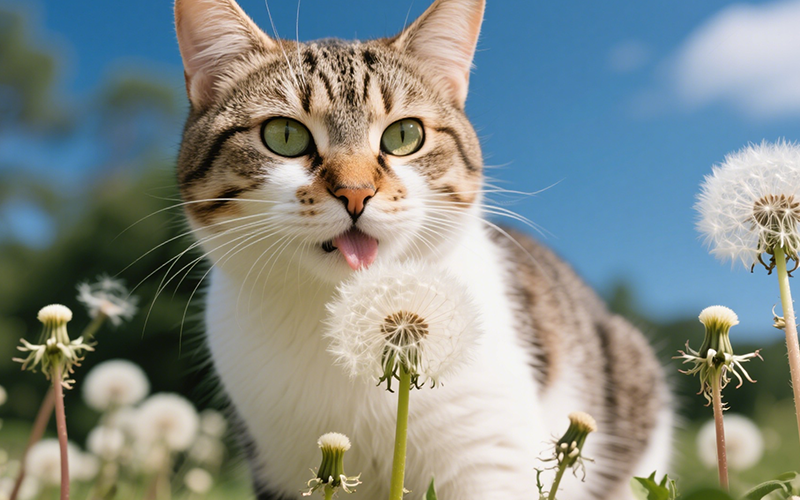
Dandelions & Felines: Can Cats Eat These Common Weeds Safely? Vet Explains
- 16 Apr 2025
Flaky Danger: Can Cats Eat Croissants Safely? Vet Explains the Buttery Risks
- 16 Apr 2025
